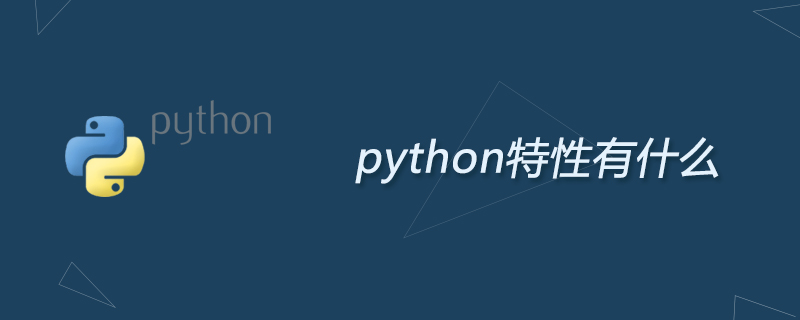

What are the features of python?
python features
Easy to learn:Python is a language that represents the idea of simplicity. Reading a good Python program feels like reading English. It allows you to focus on solving problems rather than figuring out the language itself. Python is extremely easy to get started because Python has extremely simple documentation.
Fast speed: The bottom layer of Python is written in C language, and many standard libraries and third-party libraries are also written in C, which runs very fast.
Free and open source: Python is one of FLOSS (Free/Open Source Software). Users are free to distribute copies of this software, read its source code, make changes to it, and use parts of it in new free software. FLOSS is based on the concept of a group sharing knowledge.
High-level language: When writing programs in Python, you don’t need to worry about low-level details such as how to manage the memory used by your program.
Portability: Due to its open source nature, Python has been ported on many platforms (with modifications to enable it to work on different platforms). These platforms include Linux, Windows, FreeBSD, Macintosh, Solaris, OS/2, Amiga, AROS, AS/400, BeOS, OS/390, z/OS, Palm OS, QNX, VMS, Psion, Acom RISC OS, VxWorks, PlayStation, Sharp Zaurus, Windows CE, PocketPC, Symbian and Google's android platform based on Linux.
Interpretability: A program written in a compiled language such as C or C can be converted from a source file (i.e. C or C language) into a language used by your computer (binary code , that is, 0 and 1). This process is done through the compiler and different flags and options. When you run a program, the linker/reprinter software copies your program from the hard drive to memory and runs it. Programs written in Python do not need to be compiled into binary code. You can run programs directly from source code. Inside the computer, the Python interpreter converts the source code into an intermediate form called bytecode, which is then translated into the machine language used by the computer and run. This makes using Python much simpler. It also makes Python programs more portable.
Object-oriented: Python supports both procedural and object-oriented programming. In "procedural-oriented" languages, programs are built from procedures or simply functions that are reusable code. In "object-oriented" languages, programs are built from objects that combine data and functionality.
Scalability: If you need a critical piece of code to run faster or you want some algorithms not to be public, you can write part of the program in C or C and then use them in a Python program.
Embeddability: Python can be embedded into C/C programs to provide scripting functions to program users.
Rich library: The Python standard library is indeed huge. It can help with a variety of tasks, including regular expressions, document generation, unit testing, threads, databases, web browsers, CGI, FTP, email, XML, XML-RPC, HTML, WAV files, cryptography, GUI ( Graphical user interface), Tk and other system-related operations. This is called Python's "full-featured" philosophy. In addition to the standard library, there are many other high-quality libraries, such as wxPython, Twisted and Python image library, etc.
Related recommendations: "Python Tutorial"
The above is the detailed content of What are the features of python. For more information, please follow other related articles on the PHP Chinese website!